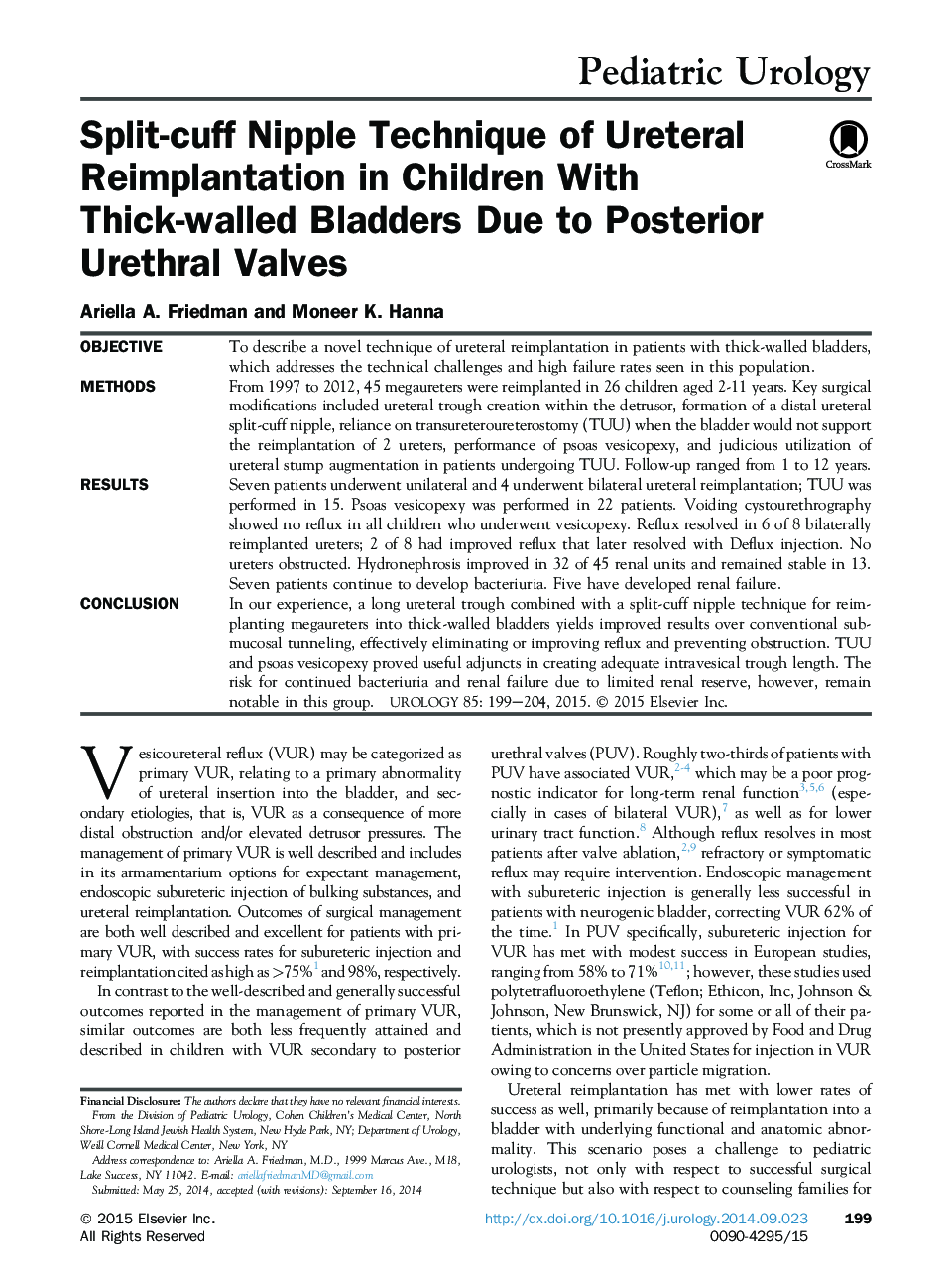| کد مقاله | کد نشریه | سال انتشار | مقاله انگلیسی | نسخه تمام متن |
|---|---|---|---|---|
| 3899056 | 1250313 | 2015 | 6 صفحه PDF | دانلود رایگان |
ObjectiveTo describe a novel technique of ureteral reimplantation in patients with thick-walled bladders, which addresses the technical challenges and high failure rates seen in this population.MethodsFrom 1997 to 2012, 45 megaureters were reimplanted in 26 children aged 2-11 years. Key surgical modifications included ureteral trough creation within the detrusor, formation of a distal ureteral split-cuff nipple, reliance on transureteroureterostomy (TUU) when the bladder would not support the reimplantation of 2 ureters, performance of psoas vesicopexy, and judicious utilization of ureteral stump augmentation in patients undergoing TUU. Follow-up ranged from 1 to 12 years.ResultsSeven patients underwent unilateral and 4 underwent bilateral ureteral reimplantation; TUU was performed in 15. Psoas vesicopexy was performed in 22 patients. Voiding cystourethrography showed no reflux in all children who underwent vesicopexy. Reflux resolved in 6 of 8 bilaterally reimplanted ureters; 2 of 8 had improved reflux that later resolved with Deflux injection. No ureters obstructed. Hydronephrosis improved in 32 of 45 renal units and remained stable in 13. Seven patients continue to develop bacteriuria. Five have developed renal failure.ConclusionIn our experience, a long ureteral trough combined with a split-cuff nipple technique for reimplanting megaureters into thick-walled bladders yields improved results over conventional submucosal tunneling, effectively eliminating or improving reflux and preventing obstruction. TUU and psoas vesicopexy proved useful adjuncts in creating adequate intravesical trough length. The risk for continued bacteriuria and renal failure due to limited renal reserve, however, remain notable in this group.
Journal: Urology - Volume 85, Issue 1, January 2015, Pages 199–204
